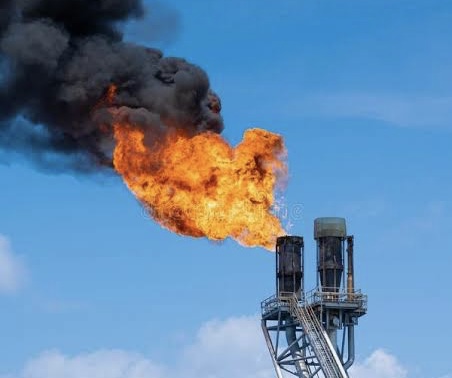Gas flaring worldwide rose to 148 billion cubic meters (bcm) in 2023, the highest level since 2019, according to the World Bank. This increase resulted in an additional 23 million tonnes of carbon dioxide equivalent emissions, comparable to adding five million cars to the roads. These findings are based on new satellite data compiled by the World Bank’s Global Flaring and Methane Reduction (GFMR) Partnership.
The World Bank’s annual Global Gas Flaring Tracker Report monitors and understands flaring trends globally. It aims to achieve zero routine flaring by 2030. Demetrios Papathanasiou, World Bank Global Director for Energy and Extractives, stated, “Millions of people lack access to basic energy, and greenhouse gas emissions continue to grow while huge volumes of gas are wastefully flared every year.”
Papathanasiou emphasized that capturing and using this wasted gas could displace dirtier energy sources, reduce greenhouse gas emissions, and generate enough power to double the electricity supply in sub-Saharan Africa.
The World Bank report focused on two African countries with significant gas flaring data. In Libya, gas flaring increased by 25% in 2023, while oil production rose by 16%, resulting in an 8% increase in flaring intensity. This suggests a lack of investment in gas infrastructure and utilization.
Conversely, Algeria saw the largest reduction in flaring in 2023, with flare volumes decreasing by 5%. Despite a 2% decrease in oil production, flaring intensity improved by 3%, continuing a positive trend over the past three years. These outcomes are attributed to several flare gas recovery projects by Sonatrach, Algeria’s national oil company.
Gas flaring releases harmful pollutants, including black carbon and unburnt methane, contributing to climate change and posing risks to both people and the planet. Eliminating gas flaring would prevent at least 381 million tonnes of carbon dioxide equivalent emissions annually.
When productively used, wasted flared gas can help displace dirtier energy sources, increase energy access in the world’s poorest countries, and enhance energy security. “The increase in gas flaring is disheartening as it follows a reduction in 2022,” said Zubin Bamji, World Bank GFMR Manager. “This sets global gas flaring levels back to what we experienced in 2019. We hope this is an anomaly and that the longer-term trend will show dramatic reductions.”
The World Bank’s GFMR Partnership, a multi-donor trust fund composed of governments, oil companies, and multilateral organizations, aims to end routine gas flaring at oil production sites and reduce methane emissions from the oil and gas sector to near zero by 2030. The partnership developed global gas flaring estimates based on observations from a satellite launched in 2012 and operated by the US National Oceanic and Atmospheric Administration. Advanced sensors on this satellite detect the heat emitted by gas flares as infrared emissions.
Source: ESI Africa



